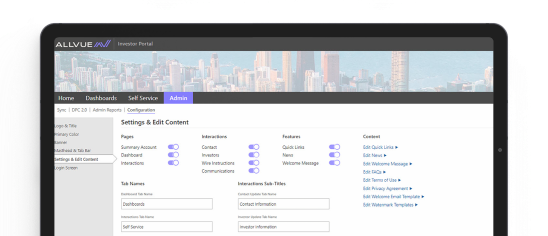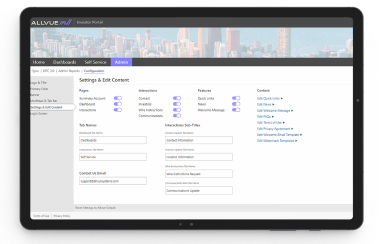The 2025 Carry & Compensation Survey Report: Insights Every Private Markets Leader Needs to See
As the private capital landscape continues to evolve, so too do the expectations and intricacies of compensation and carried interest programs. Firms are navigating a rapidly changing environment, one where attracting and retaining top talent requires not just competitive pay but sophisticated incentive structures, clear communication, and scalable operations. That’s why Allvue’s 2025 Carry & Compensation Survey Report is essential reading for private equity, venture capital, and private credit professionals. Based on responses from senior executives at firms managing between $1 billion and $100 billion in AUM, this report offers a revealing look into the shifting priorities, emerging challenges, and evolving practices shaping compensation in the private markets.
Complexity is the New Constant
According to the survey, 40% of respondents cited growing complexity as the top challenge in managing their compensation and carry programs. With a diverse mix of fund structures, European vs. American waterfalls, deal-by-deal incentives, hybrid models, and evolving co-investment strategies many firms find themselves juggling a web of bespoke arrangements.
That complexity is no longer manageable via spreadsheets alone. Roughly half of the firms surveyed have moved away from Excel, opting for purpose-built compensation management software. And yet, 60% still rely on spreadsheets—a risky proposition given today’s demands for compliance, transparency, and accuracy.
The key takeaway? Firms that modernize now will be better prepared to scale and compete tomorrow.
A Shift in How Carry is Communicated
One of the most striking insights from the report is how firms are attempting to better communicate the value of carried interest to employees. Traditionally, carry was expressed as a percentage—understandable to senior investment professionals, but often opaque to junior staff or non-investment roles.
Enter the “dollars-at-work” model, which projects a dollar value of an employee’s carry based on fund assumptions. While only 14% of firms use this method exclusively, nearly 44% now use both percentages and dollars to communicate value—up from previous years.
This hybrid approach makes the promise of carry feel more tangible and motivating, especially as firms compete for talent in a high-demand environment.
Total Rewards Statements: A Missed Opportunity?
Despite the acknowledged importance of employee transparency and engagement, 51% of firms still don’t provide Total Rewards Statements (TRS). These statements consolidate salary, bonus, carry, and co-investment information into a single view—making them a critical tool for enhancing retention and satisfaction.
And yet, just 25% of firms offer TRS that include all comp components. This gap presents a real opportunity. Firms that invest in TRS capabilities can improve communication, build trust, and better align employees with long-term performance.
The technology exists to make this easy. It’s a matter of prioritization.
Co-Investment: Incentive or Obstacle?
The report finds that only 25% of firms require employee co-investment to qualify for carry. Among those that do, more than half do not offer loans to help employees meet the capital requirement.
While co-investment can strengthen alignment and give employees “skin in the game,” it also risks excluding those without sufficient liquidity. Firms looking to foster inclusive ownership may need to revisit whether their policies are enabling participation—or unintentionally gatekeeping it.
The Rise of Synthetic Carry
Not everyone can—or should—participate in traditional carry pools. But that doesn’t mean firms can’t offer compelling long-term incentives.
According to the survey, 47% of firms now use synthetic carry mechanisms, including phantom equity, deferred bonuses, and LTIPs. These alternatives offer similar motivational power without the tax implications or legal overhead of real carry. They’re particularly useful for rewarding non-investment staff, expanding incentive reach, and retaining critical talent across the organization.
However, synthetic awards also bring administrative complexity—which further emphasizes the need for modern compensation tools.
What’s Withheld from Distributions?
Managing carry isn’t just about sharing profits—it’s about doing so responsibly. The survey reveals that less than 10% of firms charge back a management fee for their carry programs, but many withhold costs like legal fees, tax prep, and other GP-related expenses.
Interestingly, 50% of respondents cited “Other” expenses, which include accounting fees, entity charges, and general partner vehicle costs. This area remains opaque at many firms—and increasing transparency around withheld amounts could become a competitive advantage.
Benchmarking is Gaining Ground
Private capital compensation is more competitive than ever, and 45.6% of firms now use benchmarking data to inform their practices. These firms tend to fall into the 11–500 employee range, indicating that even midsized firms see the strategic value of external comparisons.
With shifting expectations around transparency, fairness, and performance alignment, benchmarking helps firms remain attractive employers and avoid the pitfalls of over- or under-compensating key contributors.
What Comes Next?
The final section of the report explores firms’ top priorities over the next three years. Here’s what stood out:
-
24% say professional reporting is their top focus.
-
23% want to implement or improve Total Rewards Statements.
-
15% are preparing to scale their compensation infrastructure.
-
47% plan to expand their carry pools.
And the most common change across the board? Improved reporting, cited by 70% of firms—a clear signal that stakeholders are demanding better access to data and more clarity around comp.
Firms also expressed a desire for tools that can project future carry value, handle GP loan programs, provide flexible formatting for TRS, and offer role-change tracking—all signals that the next generation of compensation management will need to be data-rich, intuitive, and dynamic.
Why This Report Matters
If you’re a CFO, COO, head of finance, or compensation leader in the private markets, the 2025 Carry & Compensation Survey Report is a must-read. It offers concrete data points, peer benchmarks, and real-world examples of how firms are adapting to change.
Whether you’re evaluating your current incentive model, building out TRS, exploring synthetic carry, or looking to scale, this report gives you the insights you need to make smarter, more strategic decisions.
Download the Carry and Compensation Survey Report
The full 2025 Carry & Compensation Survey Report is available for download now. Don’t miss your opportunity to stay ahead of the curve—and help your firm attract, retain, and motivate top-tier talent with modern chttps://www.allvuesystems.com/ompensation strategies.
Ready to move beyond spreadsheets? Learn how FirmView®, Allvue’s purpose-built compensation and carry platform can simplify your processes, improve accuracy, and transform your employee experience.


